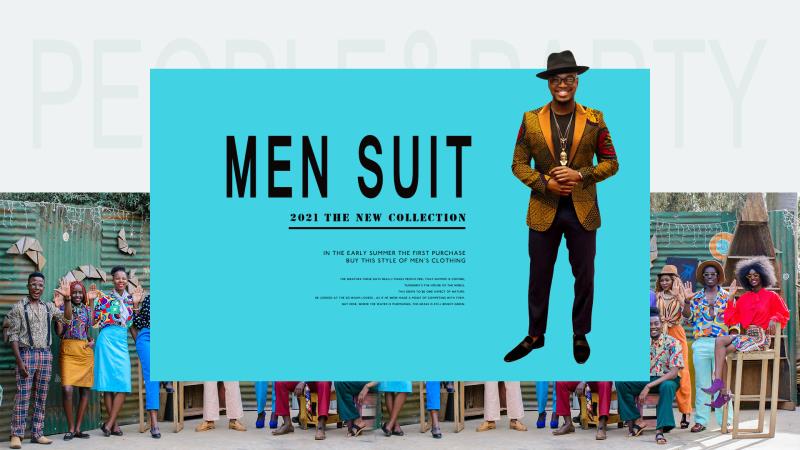The China Textile and Garment Trade Fair (Paris) is optimistic about the future of the “post-epidemic”
From July 5th to 9th, China Textile and Clothing Trade Fair (Paris) and France Paris International Clothing, Clothing, Faces and Accessories Procurement Exhibition — High-end Exhibition Hall will be held in two art salons (Atelier Richelieu & 5rue du Mail), Ladrier-Heserieu and Re Poste, Paris, France.
The high-end exhibition hall, which combines nature with fashion art gallery atmosphere, is attended by 150 international manufacturers from 15 countries and regions with the most competitive supply chain.More than 7,500 pieces of the latest clothing samples and accessories were displayed.At the same time, the 2022~2023 autumn/winter fashion trends are released for the visiting buyers.
Chinese clothing and fabrics account for more than half of this year’s high-end exhibition hall.Second, South Korea accounted for 15 per cent.Suppliers with sustainable environmental certification reached 60%.Suppliers that can accept small batch orders account for 20%.
On the first day of the exhibition, China Garment District attracted the attention of the audience. The buyers were mainly from France, and there were also buyers from Holland and Belgium to visit and purchase.
Buyers generally believe that end consumption is returning to normal after the outbreak, so they want to make purchases on the ground as soon as possible.Some brand customers who seldom visited the exhibition in the past were more relaxed about the presentation of the exhibition hall.
The China Clothing and Apparel section displayed nearly 1,500 samples, covering all kinds of men’s and women’s clothing, from shirts, jeans and sweaters to jackets and down jackets, from home wear to outdoor wear.Women’s dresses accounted for 36 percent of the total, while men’s coats accounted for 20 percent.
The audience showed great interest in creative sweaters as well as colorful dresses, printed silks and straw hats.During the exhibition, some buyers locked part of the supplier samples, will continue to contact with suppliers.
Xu Yingxin, vice president of China National Textile Industry Council, gave full affirmation to this high-end exhibition hall.He sees the rapid iteration of the high-end showrooms in Paris as crucial to keeping the European fashion industry’s supply chain stable.
As a result of the epidemic, we still can’t get together at the exhibition site as before in July.With European vaccinations accelerating and people gradually returning to work and life, business activities, including exhibitions, are expected to resume.Although it will take a while for the global economy to restart, the strength and anti-vulnerability of the industry before and after the outbreak make us confident in the face of future uncertainties.
Before the re-launch of the physical exhibition, CCIT-Textile Branch and Messe Frankfurt (France) have agreed that the logic of meeting the needs of suppliers and purchasers should remain unchanged, and that change should be embraced to provide new solutions for the industry.
Exclusive exhibition space and related promotion created by 15 key brand enterprises from China.In particular, in order to increase the dynamic display effect, the launch of the digital runway show.He thinks these attempts make a lot of sense.In his view, China is not only the number one producer of fashion products, but also one of the major countries driving international fashion changes.China has a complete textile and garment supply chain system, with obvious advantages in production, design and research and development.
Yan Yan, Director of the Social Responsibility Office of China National Textile Industry Council, stressed that the continuous strengthening of production and sustainable development of products is the main driving force for enterprises to maintain their supply chain advantages in the post-epidemic era.
Yan Yan believes that sustainable development is a common challenge facing the global fashion industry.The development of China’s fashion industry has provided strong support for Chinese consumers and global consumers in their pursuit of a better life. In its future-oriented development, China’s fashion industry should actively seek industrial solutions to meet the challenges of sustainable development.
Taking climate change as an example, China’s fashion industry has initiated the 2030 climate innovation project to promote the coordinated action of industrial chain partners from material to brand. With products as the carrier, the value of sustainable development of the industry is transmitted to consumers, thus promoting the benign development of sustainable consumption, namely:The sustainable value product meets the sustainable consumption demand and the sustainable consumption demand drives the sustainable product development.
Professional buyers who visited the site showed strong interest in purchasing environmentally friendly products, which also confirms the trend of consumers willing to pay more for environmentally friendly products.Similarly, brands are showing an increased proportion of garments made of environmentally friendly materials.Supply, procurement and consumption are increasingly overlapping in terms of environmentally sustainable products.
Grasps the current “post-epidemic” market environment, Africlife brand focuses on the intention of environmental protection products and strict control of products. In the development and research of sustainable environmental protection products, we will be more serious, professional expression of our environmental awareness, to bring more consumers healthier products and more environmentally friendly services.Carry forward our company’s traditional sustainable spirit of environmental protection, more perfect our fabric and clothing supply chain system, in the production, design, research and development.To more professional, sustainable awareness of environmental protection, to serve our customers.
Post time: 14-07-21





